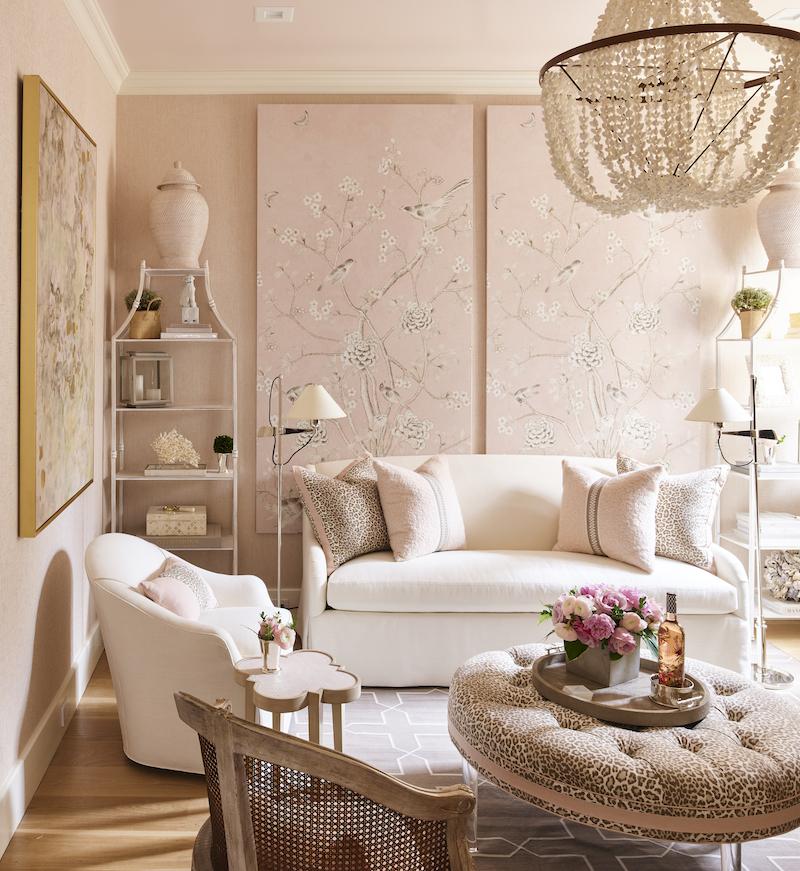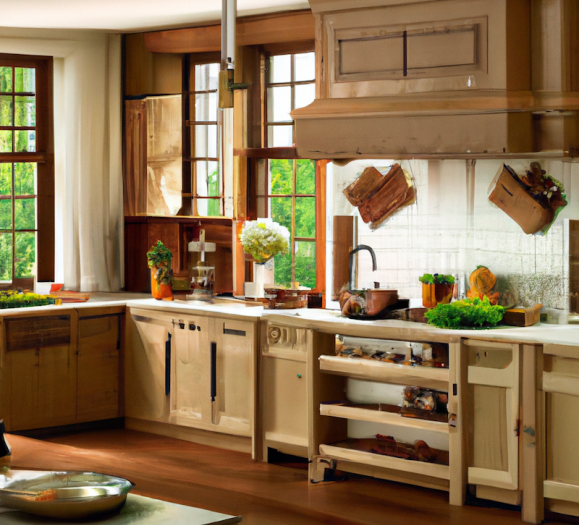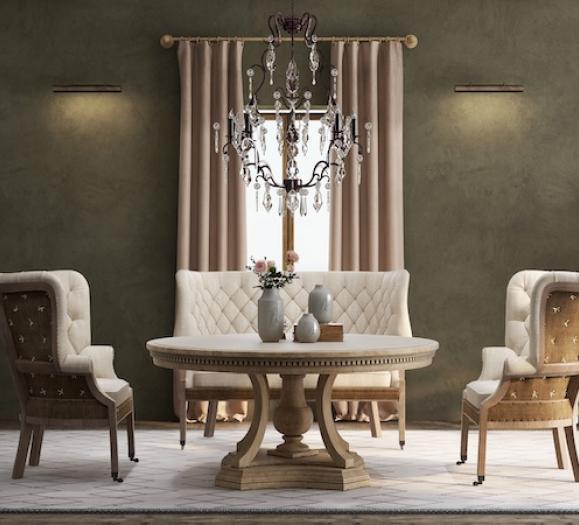At the time of this writing, the doors of Nell Hill’s in Kansas City, MO, are temporarily closed to customers, but owner Katie Laughridge has a message for habitués of the beloved home furnishings store: “We’re still here, and we’re still fabulous.”
Staying Engaged
Laughridge purchased the retail operation — arguably one of the most popular home interiors stores in the Midwest — from founder Mary Carol Garrity in 2018. That means she was in business for a little more than a year before stay-at-home orders were issued earlier this spring. That would have brought most newly minted merchants up short, but Laughridge was a marketer before she became a retailer. And, if the store’s social feeds are any indication, Nell Hill’s is as vibrant as ever.
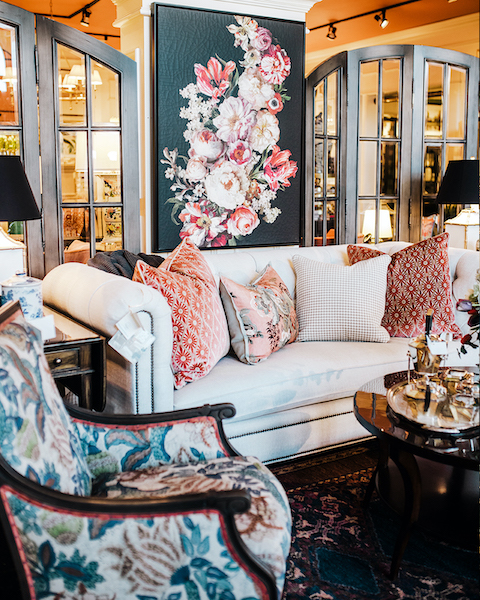
“Our goal for the time being is just to keep people engaged and excited,” she shares, “so that when we are ready to reopen our doors, people will be excited about coming in to say, ‘Hi,’ and of course, to buy things. We’re enjoying great reaction because it’s giving people something to focus on other than COVID-19.”
Though the store’s following wasn’t huge when Laughridge took over from Garrity, “It was organic,” she notes. “People wanted to connect and interact with the brand when they couldn’t do it in person, so Mary Carol and her crew started producing content to give people what they wanted. But she really had little interest in marketing and social media. Retail was really what she was passionate about.”
With a weekly decorating blog, Style at Home, and a weekly column syndicated throughout the U.S., Laughridge, as one of today’s most sought-after lifestyle resources, was positioned to continue building Nell Hill’s audience.
Raised in Kansas City, “Nell Hill’s was just a part of growing up and being a resident here and something I always loved,” Laughridge remembers. “As I got older and married, my husband would even go with me without complaint. So, when the opportunity arose to purchase the business, we jumped on it. Previously, I worked for a fabric manufacturer, so I’m new to the retail role and it’s been a huge learning experience for me. But I think the industry is amazing, full of amazing people and products and I love the team I get to work with.”
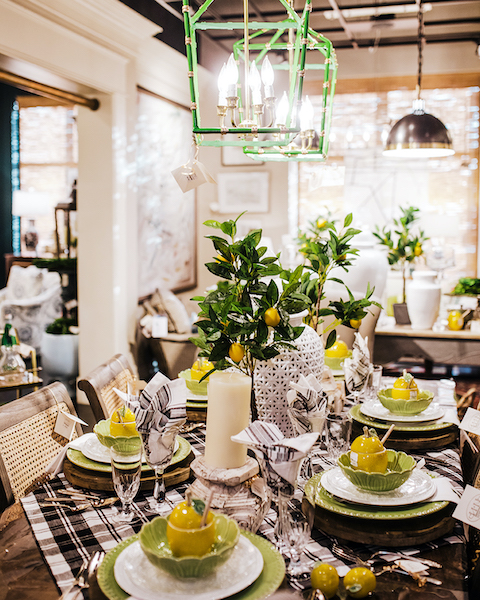
When Laughridge was preparing to take over and performing her due diligence, she asked a friend in the apparel and home space who had worked with big-name brands to meet her at the shop. “Since she was not familiar with the store, I sent her the social media links and asked her to check out the website. When we rolled up, she said, ‘I had no idea this place was so big and fabulous based on what I saw online.’ And here I was thinking, ‘Darn, I thought they did a pretty good job.’”
Not surprisingly, that experience stayed with Laughridge and has helped drive her strategy. “We want our social media feed to be very visually enticing, to get people excited and engaged, and we try to share as much of the experience as we can through images and well-written copy. But I still don’t think it’s the same as being here in person.
Get Help
As much as she loved social media and marketing, Laughridge knew she could not dedicate a great portion of her time to the effort as the new owner. “When I first came on board, my first hire was a full-time marketing manager, Karlyn Jubin. She is fabulous and runs all things social media, including our online shop, which is fairly small at this point, but something we’re excited to continue to grow. It’s a collaborative effort, but she really does a lot of the organizational things behind the scenes. I still do a lot with the blog posts and social media copy, but as far as replying to comments, answering questions and things like that, it’s primarily her. She coordinates with our sales team and floor staff to make sure questions get answered and customer service issues are taken care of.”
Active on Instagram and Facebook, the retailer has a presence on Pinterest, “but honestly, it always kind of falls to the side,” Laughridge says, “because we’re so wrapped up in producing content and getting it posted. I think the most important thing for me — and this is not just true in social media, but in running a small business in general — is figuring out what works for you and doing the best you can at it, instead of trying to spread yourself thin across all the platforms. There’s always something new, always something changing. It’s not worth spinning your wheels trying to get a whole bunch of followers on a new platform if you’re spending all your time on that instead of giving people the great content they expect from you.”
In terms of process, “we’ll brainstorm ideas and then Karlyn comes up with a calendar or outline. She’s primarily the person scheduling our photographer and making sure the images are share-worthy. I still review and sign off on them, but she’s responsible for making sure they get out there. It takes a lot of time and energy just to post once a week. Plus, we’re doing that along with marketing emails and messages. I would not be able to do it without her.”
They use a mix of images. “When it comes to what images are best to post online, they are not necessarily all pictures from our store all the time,” Laughridge relates. “We have images of what we call Nell Hill’s Home, featuring customers who have done a lot of business with us and pieces in their homes, and then just straight-up product photography. We try to do as much of that as we can in-house, and for us right now, that looks like having a photographer in a couple of times a month to shoot, whether it’s products, images, the whole floor or an event. We build a schedule for the types of images that we need around the content calendar and then we have our photographer come in and try to knock out as many as she can in a specific time period. We do supplement with some cell phone photos, videos and things like that here and there, but we try to focus on the professional photography because we’re a fairly large brand and we want to have a really nice presence.”
Great Relationships = Great Content
“It goes without saying that everything has to be beautiful,” says marketing maven Elizabeth McGann, who has spent the past six years creating the ideal look for Connecticut-based Lillian August Furnishings + Design, one of the leading retailers of fine furnishings in the Northeast. When it comes to social media prowess, she has built a business providing expert guidance to a raft of leading designers and teaches practical application to students at the University of New Hampshire, training interns, she says, “to be the type of person that I would hire.”

In building Lillian August’s presence over the years, McGann worked closely with the interior design community. “You’ve got to feed the content machine, and coming up with content to post is a hurdle for anyone doing Instagram,” she relates. “It’s very smart for retailers to go to their network of designers and customers and use their images. It’s a win-win, because not only are you getting beautiful content that you don’t have to pay for, but a lot of the micro-influencers are super excited to see their project being featured on a site like Lillian August with 25,000 followers. As long as a retailer does it in a way that’s about the designer, and they are really promoting the designer and giving them credit, in my experience it’s a very mutually beneficial relationship. The designer is grateful, and the retailer has beautiful imagery that doesn’t cost them any money. Plus, there’s cross-promotion for added engagement.”
Making this work with a higher-end retailer with its own design team required plenty of sensitivity. “I have to say that in the entire six years at Lillian August, the company was always interested in working with outside designers and put resources into a trade team to support them. There are so many interior designers in Fairfield County (CT), and New York, that from a business perspective, it just made sense to align with them. They know how things work and you have all that repeat business, because you’re not waiting 10 years for someone to redecorate their home. They’re just project after project.
“What’s tricky is how you market your own interior designers while courting outside designers. To do that, I was really careful with Instagram, to make sure that every week we were promoting a different designer, but also promoting Lillian August interior design services. To organize it, we had hashtags for both. With a big company like Lillian August that does so many different things, we needed to create separate hashtags to market different segments of the business, like the trade community, the various showroom locations, the in-house design projects, the licensed collection with Hickory White, etc. …”
In making it sing, McGann drew on her personal experience working for an interior design firm. “Designers will pay more for product if they trust the retailer and if they feel supported by the retailer, and if the retailer supports them and helps them have a friction-less experience. They will spend more money to buy from a retailer that promotes their work and gives them content to share on Instagram, that makes them look fabulous to their peers and prospective clients, and they will pay more to have a sales associate who is like a friend they trust, who remembers their birthday and things likes that,” she posits. “As a designer, if you’re having unpleasant experiences every time you buy furniture, that’s going to cost you money and it’s going to make you unhappy. It’s just not worth it.”
At a time when many doors remain closed, McGann says it’s more important than ever to communicate honestly with followers. “You have to let them know that yes, you are temporarily closed, but that you are still there for them,” she says. “Ask them how you can support them. Show product that you can buy online. Put out the email addresses for your associates who are working remotely that can assist. During this time, people want to feel connected and supported. You just have to be creative and open about doing things differently and listen to your community about what they need. What’s great about Instagram is you can ask questions and have people answer you for market research to figure out how you navigate this uncharted territory. Beyond using technology to see projects through, the important point to remember is that now is the time to earn goodwill that clients and customers will remember when the economy comes back. It’s so important to plant those seeds. Most of all, just be authentic. People are savvy and can really read authenticity on Instagram, so don’t try to be something that you’re not.”
Build Excitement
Situated in a lakeshore community in Muskegon, MI, RandiLynn Talsma and her husband Josh had a clear idea of what they wanted Blended Furniture Market to be when they purchased an old, 11,000-square-foot Rite-Aid building in the spring of 2016. For years, they had successfully run Second Chance Design, a business specializing in refurbishing Mid-Century furniture, and were ready for something new.
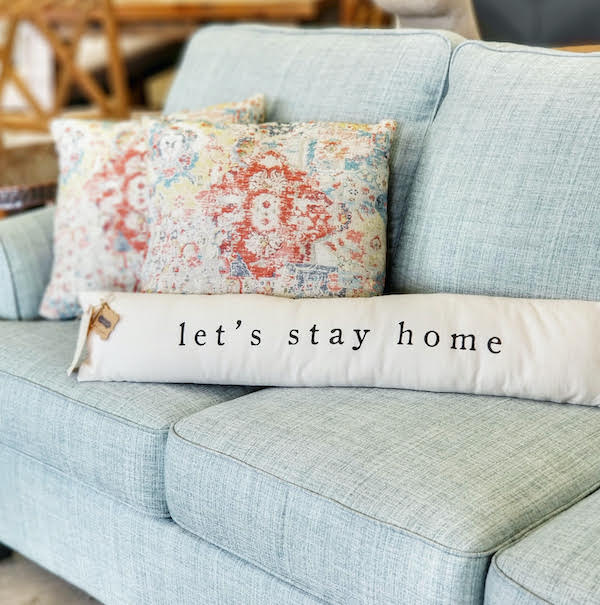
The couple brought their base of 2,000 loyal followers from Second Chance with them on the new venture. “We didn’t have Instagram at that point, and though we didn’t hugely engage on Facebook, every once in a while we’d say, ‘Thanks for your support,’” she remembers. “So, people in the community knew us and knew our family and our kids. When we got the keys to the building, we changed our page name and took a picture of our two kids and us with hammers and shovels, saying, ‘You’re never going to believe what’s coming next.’ Then, for the next two months, we really just built excitement. We put things in our windows, but we didn’t tell people what we were doing.”
What they did was get to work on revamping “the building’s fluorescent lighting and bad flooring,” Randilynn says with a laugh. When they were ready, “we did one grand opening mailer. After that, we’ve only done adorable billboards with a bright sofa and flowers with the tag, ‘We make your purse and home happy.’” Eventually, they hired a young artist from the Art Institute of Milwaukee to add a mural to the side of the building with the same theme. They rely on social media for any further promotion of their concept, which is to sell furnishings one special piece at a time. “We want you to fall in love with each piece you put in your home,” she offers, “and we want to create lifetime clients.”
To that end, Blended Furniture Market is all about a sense of discovery, with customers stopping by often because there’s always something different to see. And that holds true on their social feed as well. “You might walk into the store and see me skipping and singing on a Saturday morning with my brother on a microphone in the background pretending,” the retailer says, “and we wanted our feed to show who we are on a different scale. People want genuine and fun. You can watch a perfectly produced video from TJ Maxx, and that’s great, but it doesn’t make you feel like this is my hometown and these are people I know and enjoy.”
Though she uses the Instagram scheduler Planoly to help manage the feed, not surprisingly, Talsma likes to keep things fluid. “Life gets crazy and you could have something planned for a Tuesday that you need to change a few days later.”
This, of course, has been one of those times. “We are closed right now,” she says, “and that’s hard. I posted a picture yesterday of my one little corner from my sofa looking out my window. I said, ‘We might be separate, but we can still be together. Send me a picture of your little corner.’
And I had a ton of responses, with people sending me pictures of their Blended furniture, but also just shots of their life and what they’re doing.”
She is busy sharing stories. “We still have restaurants that are open here, and I do not cook. So I’m sharing stories about going to the drive-through to pick up, and then tagging them in our story while we’re having dinner at home. And they are sharing it. Last night, I did a virtual fashion show with a local clothing store that I adore, and she did giveaways. After her last giveaway, she said, ‘We’re all in this together; tag one of your other favorite local stores. There were 230 women online and 20 of them said Blended Furniture Market … and only one of them was my mother-in-law! Collaboration on social media is huge.”
Bottom line, the retailer says, “Nobody wants to feel sold, and for that reason, we’re not a commission-based sales floor, but what we are is fun and authentic.”
For this reason, “we don’t use stock photos, but always use the same filter to keep shots in the store looking crisp and colors true. And, while they typically take pictures for 30 minutes or so before the store opens three days a week, Talsma is adamant that she doesn’t want a camera or phone used on the sales floor all the time. “I don’t want anyone constantly checking Facebook or our feed, because I don’t want customers to feel that that is more important to us than they are. That said, when people are having fun, we ask if we could take pictures of them. We say, ‘Can we show people you are fun? And they usually answer, ‘Awesome, I’m fun!’”



